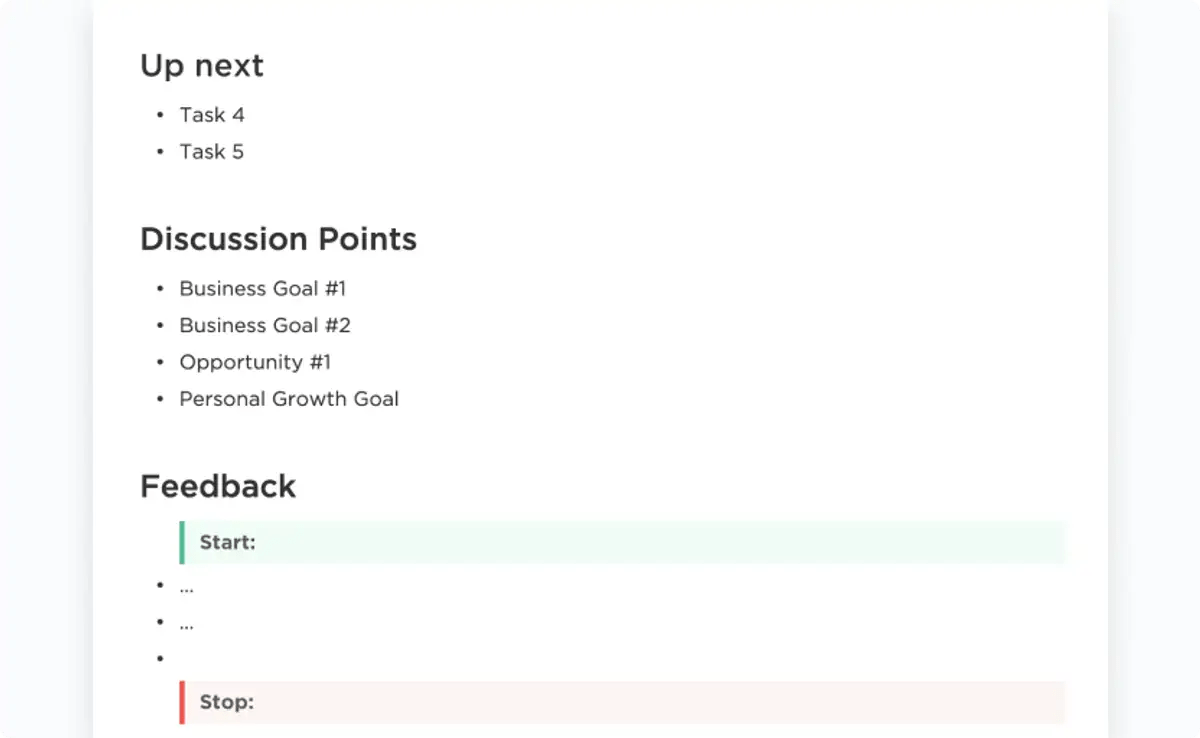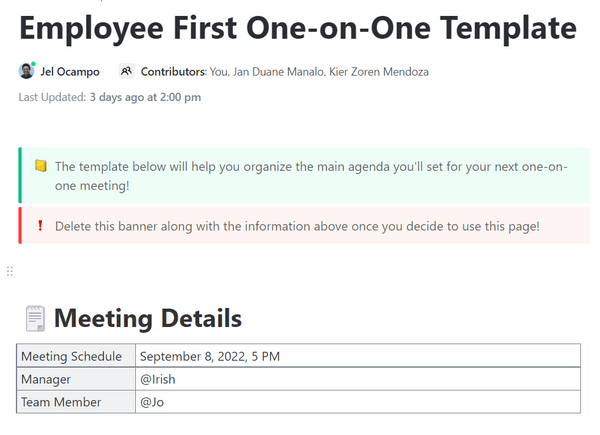

Individual contributors are an indispensable part of any organization. They’re highly skilled in their specialized areas and focus on specific tasks and projects without direct team management responsibilities.
While many people choose to stay in this individual contributor role, deepening their expertise, some also pursue management positions that involve leading teams and making broader organizational decisions.
Transitioning from an individual contributor to a people manager has significant benefits, including leadership opportunities, more formal authority, career growth, and an expanded skill set. It is an exciting time involving a shift in focus from individual tasks to overseeing and guiding a team’s work.
This blog will explore what you should know about the transition from individual contributor to manager of a team.
- Characteristics of Successful Individual Contributors
- How to Prepare for the Transition from Individual Contributor to Manager
- Implementing the Change: New Roles and Responsibilities
- Challenges of Transitioning to a People Manager
- How to Adjust to Your New Role as a People Manager?
- Thrive as a People Manager with ClickUp
- Frequently Asked Questions (FAQ)
Characteristics of Successful Individual Contributors
Here are the characteristics all successful individual contributors possess:
Excellence in individual roles
Successful individual contributors are adept at their roles and responsibilities. With technical expertise, problem-solving skills, attention to detail, and time management, they can navigate challenges independently and deliver high-quality results.
Successful individual contributors ensure that they:
- Manage multiple deadlines
- Identify goals
- Develop plans
- Monitor their progress
- Develop contingency plans to battle any anticipated problems
Since they’re the only ones on their ‘team,’ their decision-making style is quick and direct.
Successful individual contributors often rely on various tools and technologies to stay on top of their projects. They’re pros at using productivity and project management tools like ClickUp to their advantage. Many are also good at articulating their thoughts and presenting information to stakeholders.
Their curiosity and desire to keep improving are other skills that make them successful in their roles. They try to stay updated about industry trends, best practices, and technological advancements. They take the initiative to refine their skills and adapt to evolving demands, ensuring their contributions remain valuable and impactful.
Focus on collective needs
Successful individual contributors also recognize the importance of collaboration and mutual support in achieving objectives. They maintain a good working relationship with co-workers. Their focus is on collective needs, not individual ones.
They actively engage in group discussions, share insights, and contribute ideas that benefit the collective effort. They inspire trust and camaraderie among team members with their collaborative and supportive working style.
However, their contribution doesn’t stop there. They assist others in completing tasks and demonstrate empathy toward their colleagues’ perspectives.
They offer assistance, mentorship, and encouragement to their teammates and foster a culture of collaboration and continuous improvement.
Mindset toward growth and progress
Their mindset of growth and progress sets successful individual contributors apart from the crowd. They view challenges as opportunities for personal and professional development. Setbacks are temporary hurdles for them—ones they approach with resilience and determination.
They use their failures as valuable lessons in their growth journey. Outstanding individual contributors prioritize well, finish what they begin, and take responsibility for their goals. They exhibit various work styles but have some common traits, like being detail-oriented, independent, cooperative, and supportive.
Many individual contributors actively seek feedback from peers, supervisors, and mentors to gain insights into improvement areas. They believe in continuous learning through formal training programs, self-study, or mentorship.
Individual contributors can stand out by showing these qualities:
- Expertise in the technical aspects of the job
- Independent problem-solving and quick decision-making
- Responsible and detail-oriented approach to work
- Collaboration and team-work
- Helping and mentoring others
- Curiosity and a desire to keep learning and growing
How to Prepare for the Transition from Individual Contributor to Manager
You are an excellent individual contributor, ready to take the next step in your career. The question is: How do you prepare for the change? The shift from an individual contributor to a new manager is significant, as a leadership role comes with new responsibilities related to team management.
Here’s how you can prepare to transition from individual contributor to manager.
Conduct a self-assessment
The first step is to conduct a thorough self-assessment. This involves introspection into your skills, values, and goals. Here are the things you should check during self-assessment:
- Reflect on your professional journey
- Identify major achievements
- Identify challenges and areas for improvement
- Understand your communication style
- Assess your decision-making abilities and emotional intelligence
This knowledge will help you become more self-aware by assessing your capabilities and weaknesses.
Use self-assessment tools and seek feedback from colleagues and supervisors to gain a holistic view of your strengths and areas of development. This process of self-discovery will enable you to set meaningful goals and create a personalized development plan.
Get mentorship and training
Mentorship and training can help ease any transition.
Mentorship provides invaluable guidance and perspective from seasoned professionals who have navigated similar career paths. The right mentor helps you develop skills, offers an objective view and valuable feedback, and expands your network.
So, choose a mentor within your organization or industry who can offer insights, advice, and constructive feedback. A mentor can be your sounding board and help you consider the pros and cons of different ideas and opportunities. They will help you:
- Stay motivated and focused
- Identify new skills to learn
- Improve your performance
- Make an informed decision
- Reach your full potential
In addition to mentorship, you can invest in training programs, workshops, and certifications to enhance your skills and stay ahead of industry trends.
Develop leadership skills
Managing the people working with you and under you is a big part of any leadership role. As a people manager, you have to do many things at once. Apart from nurturing and optimizing your team, you must hire and train employees, oversee payroll management, address grievances, assign responsibilities, collect employee feedback, provide necessary resources, and more.
So, developing leadership skills is essential for a successful transition from individual contributor to manager. It requires a commitment to continuous growth and self-improvement. Focus on honing these essential skills:
- Taking initiative
- Critical thinking
- Empathy and emotional intelligence
- Effective decision-making
- Managing conflict
- Discipline and time management
- Effective communication
- Self-awareness
- Problem-solving
- Addressing performance issues
- Providing constructive feedback
- Interpersonal and delegation skills
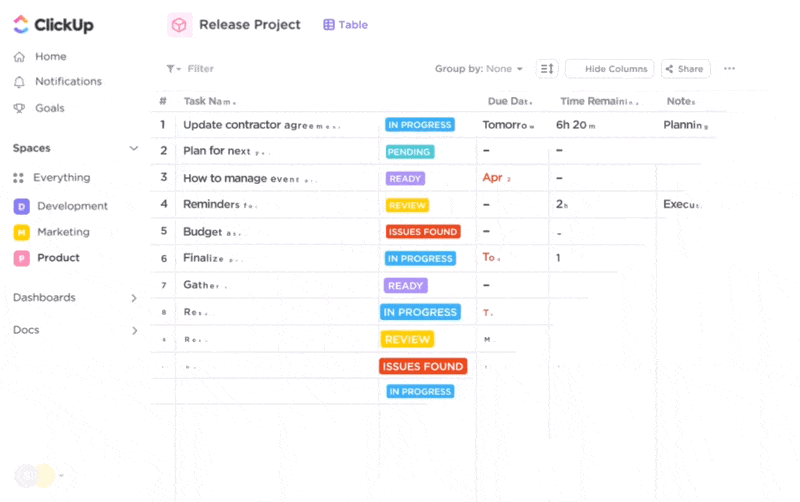
Use people management software to supplement your skills and make your tasks easier. Tools like ClickUp allow you to centralize collaborative work, avoid miscommunication, track team progress, and automate simple tasks.
You can also engage in leadership development activities such as attending seminars, reading books about leadership, and participating in leadership training programs. Further, take advantage of opportunities to lead projects or initiatives within your organization to gain hands-on experience and refine your abilities.
Additionally, consider taking some time for quiet reflection. Leadership is a journey that requires continuous learning and change. Therefore, always reflect and determine what behaviors and leadership strategies feel right to you.
Identify and hone your leadership style
While learning leadership skills, you must decide what type of leader you want to become. There are many leadership styles, like coaching, autocratic, administrative and bureaucratic, democratic, and more.
Familiarize yourself with various styles to understand their advantages and limitations. Take an assessment to determine your style and find out which one best suits you.
Wondering why you should find your style?
Well, it helps you identify areas for improvement. Being self-aware helps you deploy your leadership style more effectively and suitably. Moreover, flexibility in leadership also allows you to inspire and motivate your team, encourage collaboration, and navigate different challenges effectively.
Adjust your perspective
The transition from an individual contributor to a people manager requires a shift in perspective from focusing on individual tasks to aligning team efforts with organizational goals. This means you need to shift your focus from yourself to the team and others.
New managers are responsible for the work their team members do. So, your future success as a team leader will also depend on the success of your team and the organization as a whole.
Therefore, embrace a strategic mindset emphasizing long-term planning, collaboration, innovation, and teamwork. You must take accountability for your team instead of being accountable only for yourself.
Preparing well for the transition to people manager:
- Become self-aware; identify strengths and areas of improvement
- Enhance your skills and knowledge with mentorship and training
- Choose activities that can hone your leadership skills
- Supplement your skills with tools and technology
- Understand your leadership and communication style
- Develop a long-term and strategic mindset
- Focus on team instead of your individual work
Implementing the Change: New Roles and Responsibilities
Once you’ve successfully transitioned to being a people manager, it is time to embrace your new roles and responsibilities. Your primary responsibilities include:
Leadership: Guiding the team towards goals
As a people manager, your role is more than just overseeing tasks. You are also responsible for inspiring and guiding the team towards shared goals. You have to establish a clear vision and direction and ensure your team members are aligned with them.
Fulfilling these responsibilities has a profound impact on your employees’ engagement. In fact, a Gallup survey found that two-thirds of employees say they are more engaged in their work when their manager helps them set work priorities (66%) and performance goals (69%).
Leading by example is the hallmark of strong leadership. Here’s what you should do:
- Demonstrate integrity by acting ethically and transparently
- Effectively communicate expectations and priorities by clearly articulating goals
- Foster a positive work culture by providing a supportive environment
- Offer guidance and be available for mentoring
- Identify and eliminate barriers to progress
- Empower team members to contribute their best through initiative and delegation
Motivation: Inspiring the team for better performance
Motivating your team to perform is your fundamental responsibility as a people manager. This involves recognizing and rewarding individual and collective achievements.
You also need to understand the unique motivators for each team member and change your approach accordingly. Here are some other ways to motivate your team:
- Set clear goals and communicate with your team
- Give your team members the space to do their work
- Share and ask for feedback from the team
- Implement and accommodate flexible work schedules
- Recognize and reward achievements and contributions
- Create a positive and collaborative work environment
Performance appraisal: Evaluating team performance and providing feedback
Performance appraisal is another crucial responsibility of new managers. It enables professional development and aligns individual performance with organizational goals.
Performance appraisal involves establishing clear performance expectations, regularly assessing individual and team achievements, and providing helpful feedback.
For official performance review discussions, you can use templates like the ClickUp Performance Review template to give effective feedback and streamline the process. It tracks employee performance, sets clear goals, and helps organize evaluations from both employers and colleagues.
The template also includes custom statuses and fields, so you can add attributes, categorize them, and customize them to meet your needs.
Apart from ensuring a streamlined review process, it is crucial to be fair and objective during performance reviews. Remember, effective feedback goes beyond formal appraisals; it involves ongoing communication to address performance issues, recognize great work, and support continuous improvement.
Challenges of Transitioning to a People Manager
The transition to people manager carries a fair amount of challenges. Here are some of them:
Balancing multiple responsibilities
New managers often struggle with juggling multiple tasks simultaneously. They have many responsibilities, including project oversight, team management, and administrative duties. Balancing them while focusing on long-term goals can be overwhelming and requires effective time management.
Effective delegation
As an individual contributor, you probably never had to delegate tasks. However, delegation is crucial to becoming a successful leader. New managers may struggle with letting go of tasks they were once responsible for and trusting their team members to do them.
Employee development
As a manager, you’re now responsible for developing your team’s skills and abilities. You must identify development opportunities, provide mentorship, and support employees in reaching their career goals. Balancing the needs of the organization with individual career aspirations can be challenging.
Conflict resolution
Managers have to be proactive while resolving conflicts between team members. Addressing interpersonal issues, differences in work styles, or disagreements about project priorities requires effective conflict-resolution skills. This can be challenging for new managers who might not have dealt with it before.
How to Adjust to Your New Role as a People Manager?
Even with all the preparation, adjusting to your new role as a people manager can be tricky and full of challenges. However, a few small steps can go a long way in ensuring your transition from individual contributor to manager is as smooth as possible.
Learn about your team
You must understand team dynamics now that you are working with a team. Strong team dynamics lead to enhanced communication, higher morale, effective conflict resolution, and better productivity.
It involves recognizing each member’s strengths, personalities, and working styles. So, take the time to get to know your team members personally and professionally and build rapport and trust.
Learn to understand team members’ communication patterns, decision-making processes, and conflict-resolution strategies. You can do this by observing your team, conducting individual interviews, and interviewing stakeholders who work with your team.
But don’t stop here! Successful new managers form a strong connection with their team. They help team members see themselves as part of something greater.
Show genuine interest and empathy in your team’s well-being, celebrate their successes, and provide support during challenging times.
Schedule introductory conversations with each person (make them relax!) and learn about their working styles, career goals, and communication styles.
Leverage the Employee One on One template by ClickUp to capture topics and action items for an impactful conversation.
This template will structure your meetings consistently, enable open dialogue, and provide space to discuss challenges. This Docs template includes custom fields and statuses so you can structure it how you prefer. Create tasks from it and connect them to workflows with custom views, task dependencies, and reminders to help you keep track of action points.
Ensure transparency around goal-setting
Communicating your expectations regarding team performance, goals, and individual roles is essential. And you can do that with the help of a tool like ClickUp, which enables effective, quick, and transparent communication.
ClickUp Goals lets you create goals with clear timelines and automatic progress tracking. You can organize your goals with easy-to-use folders and track sprint cycles and weekly employee scorecards.
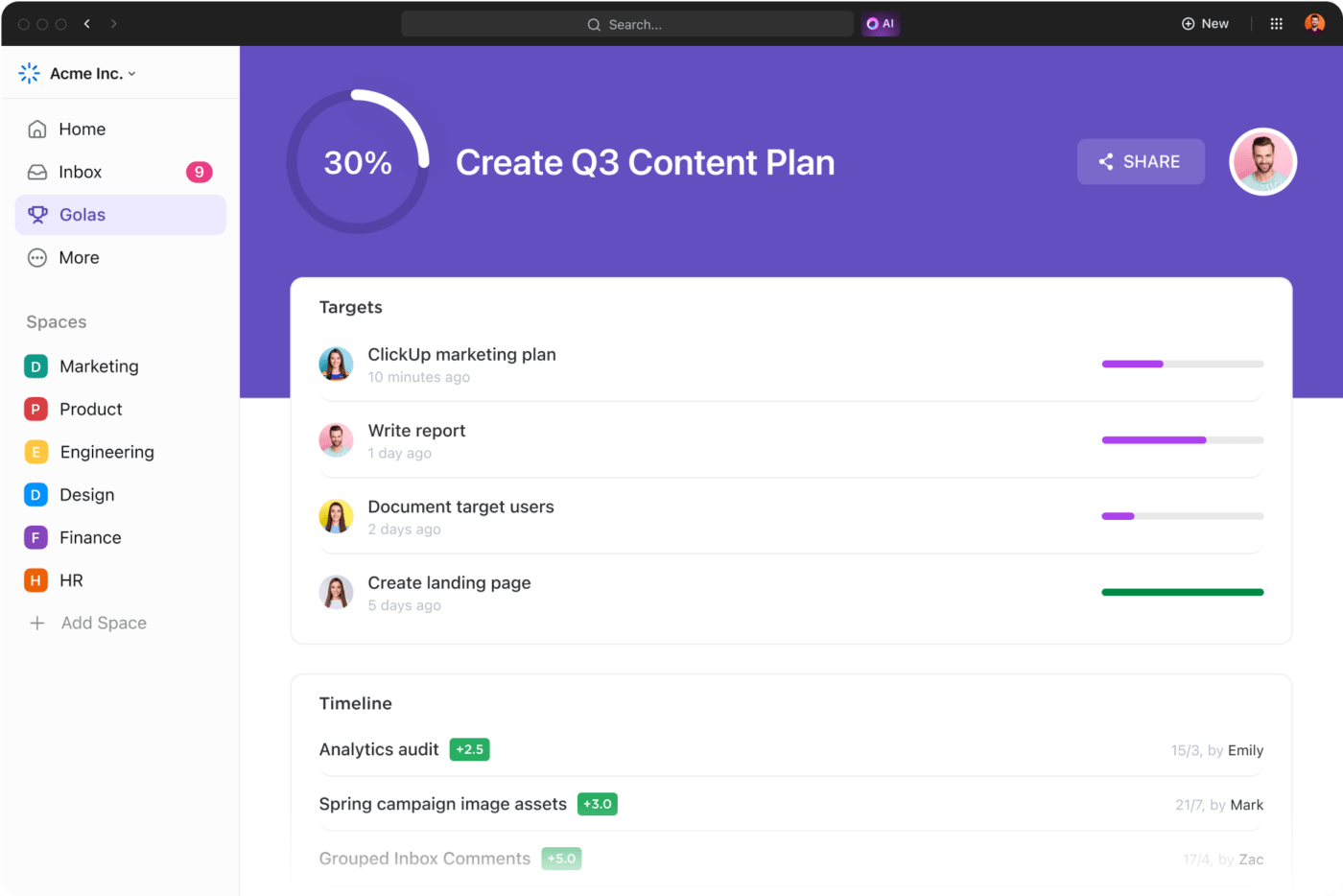
However, your role goes beyond communication. You must help your employees connect with those goals.
Help them see why these goals were selected and how their contribution impacts goal achievement. You can do this by holding candid conversations and answering your team’s questions. You can also put yourself in their shoes to better understand their perspective.

Also, help your team understand the impact of their work by sharing outcomes and progress reports with them. Leverage ClickUp Dashboards to get deep insights and an overview of your projects and team members.
ClickUp Dashboards are fully customizable. You can visualize your work, add multiple widgets to make it as detailed as you like, track team progress, identify problem areas, and share your customized dashboard with others within your workspace.
Encourage collaboration and communication
As a people manager, one of your most essential tasks is to foster collaboration within your team. Establish open communication channels that allow them to communicate easily.
For example, ClickUp Chat lets your team share updates and collaborate on all their work. You can communicate in real time and even assign comments as tasks.

You can also initiate collaborative projects or activities to promote teamwork and bonding. By assigning tasks that require input and contributions from multiple team members, you provide opportunities for them to make an effort towards common goals.
Another way to enhance communication is holding regular team meetings and brainstorming sessions. Attending meetings as a team will allow your team to exchange and build upon each other’s ideas, collaborate on projects, and address any challenges.

You can use tools like ClickUp Whiteboard and ClickUp Docs to hold effective brainstorming sessions in real time. ClickUp Whiteboard allows you to add notes, embed doc cards into the whiteboard, turn your ideas into tasks, link files and docs, and much more.
Delegate responsibilities
New managers have various managerial roles to fulfill. The increase in scope and responsibilities in addition to managing people can be overwhelming. This is where delegation helps. Delegation is an inseparable part of any leadership role—and one that new managers often struggle with.
Delegating responsibilities empowers your team, promotes professional growth, and achieves goals. The best way to delegate is to identify tasks and projects that match team members’ skills and interests.
Communicate expectations, deadlines, and planned outcomes to eliminate confusion and ensure understanding. Don’t micromanage; provide the necessary resources, discuss strategies, and trust your team members to make the right decisions.

Use ClickUp’s project management platform for teams to make delegation more effective. Create tasks, set task priorities, track real-time progress, and assess team capacity quickly. With ClickUp Tasks, you can plan any project, seamlessly navigate to tasks and subtasks, and visualize your work in different Views. You can also customize your workspace to match your needs.
Tasks also let you delegate work to your team quickly, as you can easily assign comments as tasks and add multiple assignees to each of them.
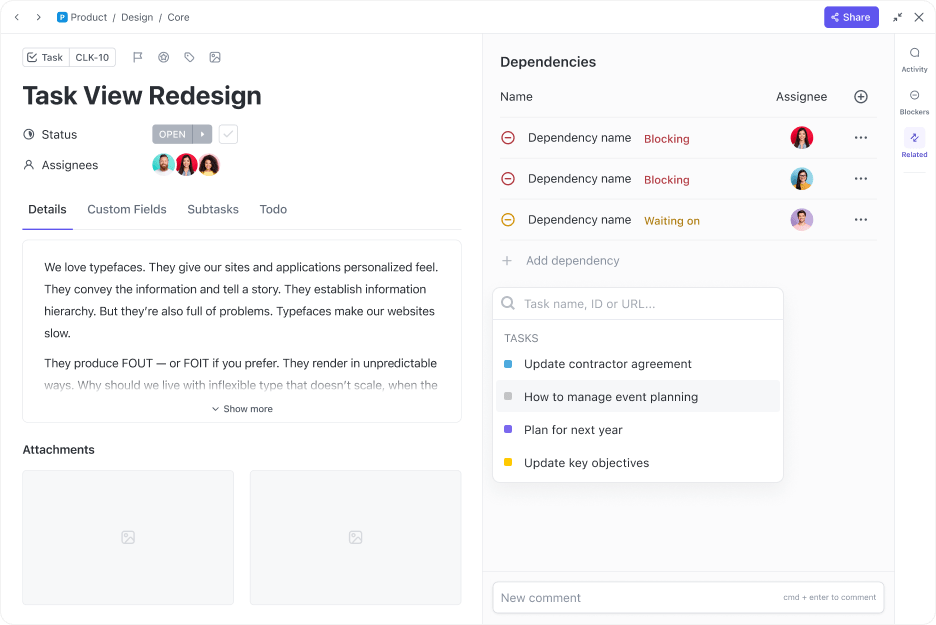
What’s more, you can create dependencies between tasks and documents. ClickUp lets you create three types of dependencies:
- Waiting on: A task with other tasks that should be completed before starting it
- Blocking: A task that stops another task from being finished
- Linked tasks: Related tasks
You can even link your tasks to external tools like Zoom, Slack, Dropbox, etc. This way, you can access everything you need in a single place, reducing the need for back and forth between team members.
Be open to feedback
Receiving feedback is just as essential as giving feedback. Therefore, you must create an environment where your team can freely express their views and feedback. Give your team members the space and opportunity to share their feedback.
You can actively ask your direct reports for feedback and ideas during regular team meetings. Ask specific questions instead of open-ended ones. The aim should be to get tangible feedback that you can use for self development.
Don’t restrict yourself to the team. Seek feedback from your mentors, supervisors, and former colleagues. Their perspective may differ from your team’s, but it is equally valuable.
Use a people management tool
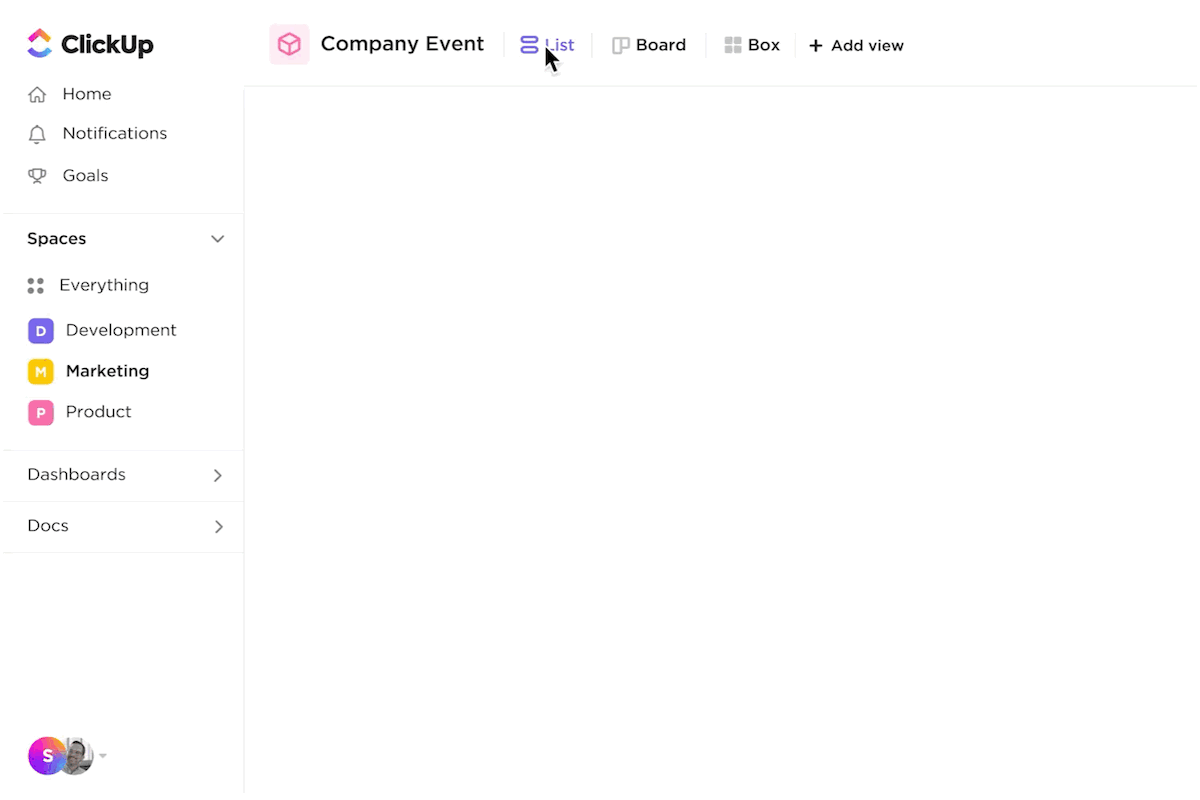
Having an efficient tool by your side can help you excel in management roles.
ClickUp is an all-in-one project management tool, perfect for new managers. It helps you balance multiple activities, monitor team progress, and manage your team—all under one platform.
In addition to goal-setting and tracking, ClickUp can also help you and your team in other ways:

- Choose among 15+ views, such as List, Calendar, Timeline, and Table view, to find the one that suits your leadership style and preferences the best
- Increase efficiency and productivity with project management templates
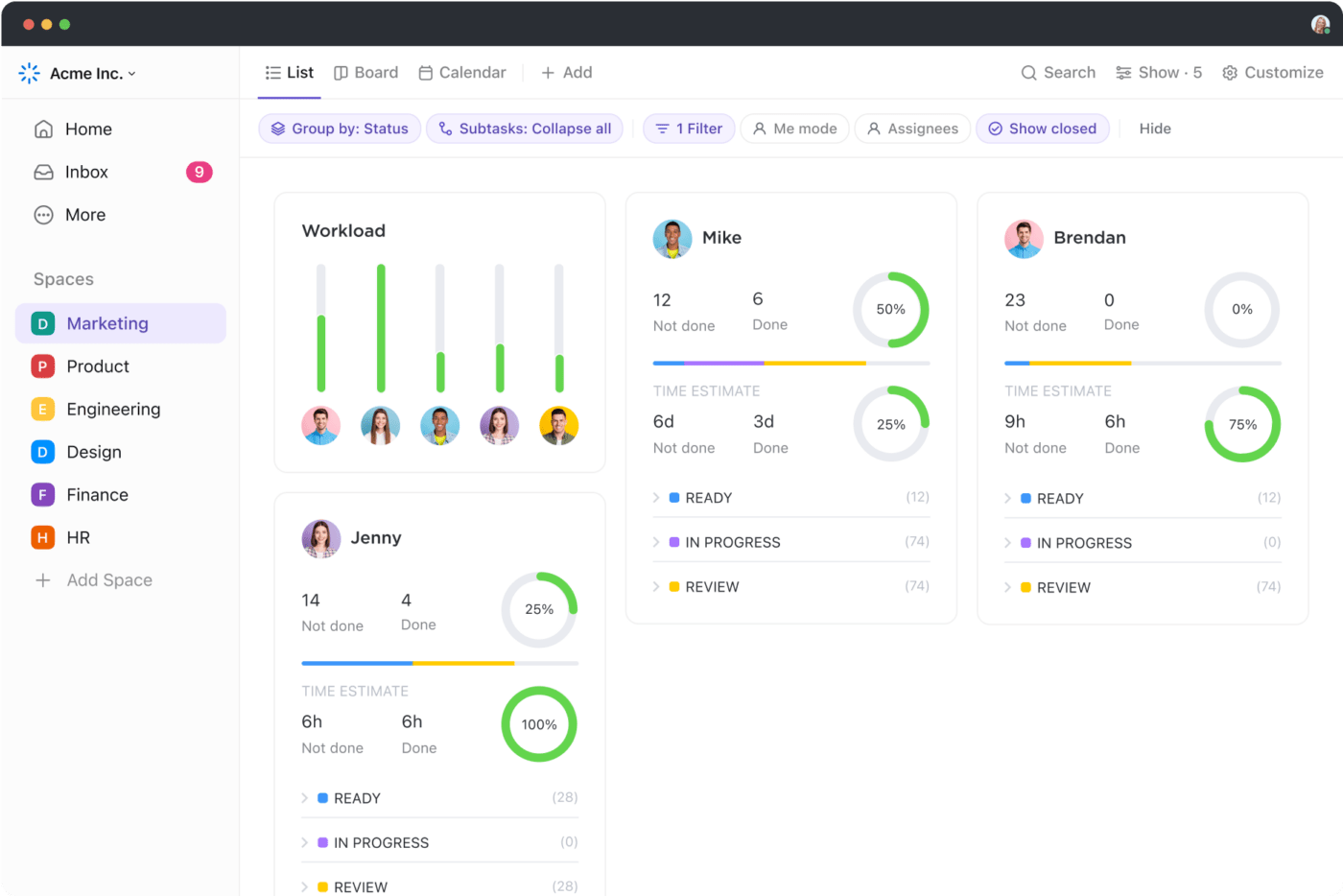
- Review your team’s workload, track their progress, and manage timelines using the Team View
- Integrate with over 1,000 tools and keep all your work on one platform
- Automate routine work using 100+ pre-built automations (or customize them to meet your needs!)
- Improve productivity by using ClickUp Brain to write emails, generate project reports, summarize meetings, share updates, and more
Making the transition to people leader easy for yourself and your team:
- Learn to manage your time effectively
- Develop and improve your conflict-resolution skills
- Know your team; develop strong connections with individual team members
- Build a culture of transparency, open communication, and teamwork
- Don’t micromanage; delegate and track
- Seek and act on feedback regularly
- Use tools that keep you productive and on top of things
Thrive as a People Manager with ClickUp
The transition from individual contributor to manager is a significant step in your career. The change in job title comes with many ups and downs. People leaders are naturally responsible for more than their own work.
Many new managers feel intimidated by these changes. However, preparation and some best practices for new managers can smoothen your transition and increase your confidence. Learning about your team, understanding their dynamics, setting transparent goals, and staying open to feedback is crucial to becoming a good people manager.
Further, encouraging your team to communicate and delegating responsibilities will build trust and respect.
ClickUp is a productivity tool that helps you connect with your team, delegate effectively, juggle multiple tasks, and more. Sign up for free!
Frequently Asked Questions (FAQ)
1. How to transition from individual contributor to people manager?
You can transition from individual contributor to manager by getting mentorship for your individual growth, understanding your management style, learning leadership skills and styles, adjusting your perspective, connecting with your team, and learning to delegate effectively.
2. What skills are essential for a successful transition to a managerial role?
Skills like a growth mindset, critical thinking, active listening, problem-solving, leadership qualities, conflict resolution, and effective decision-making are essential for a successful transition to leadership roles.




